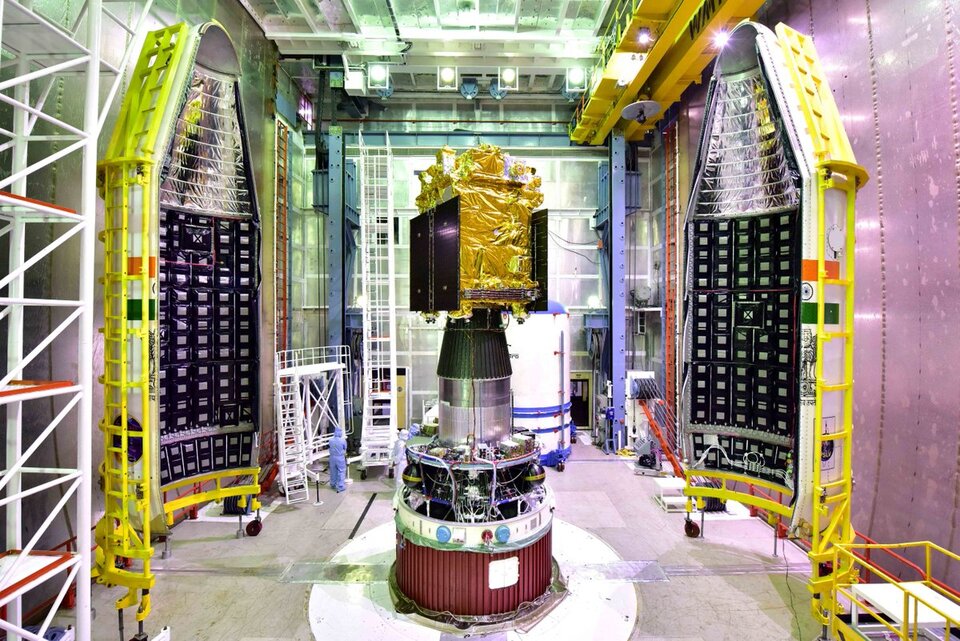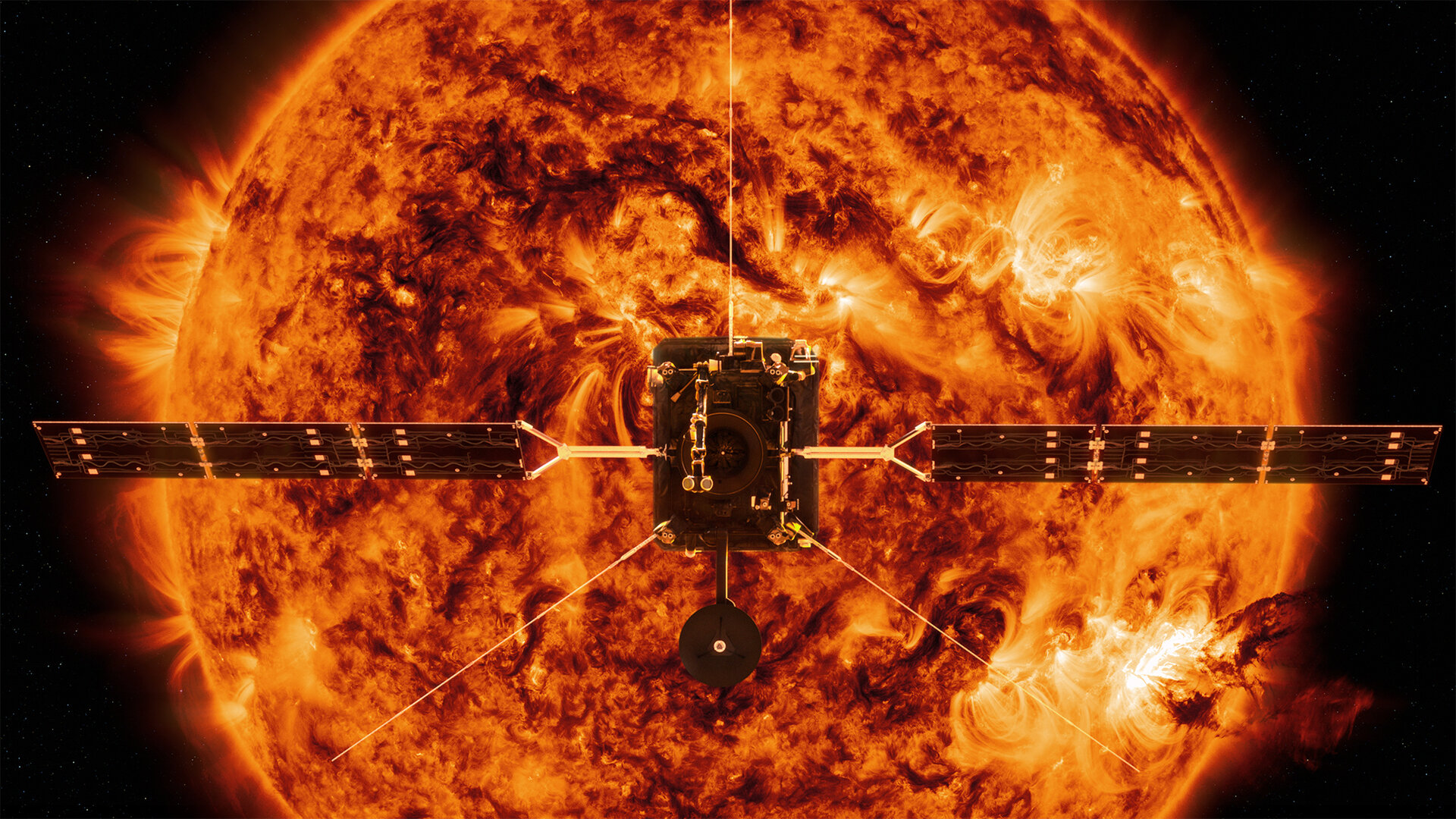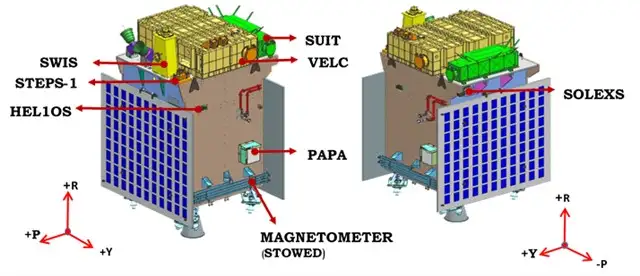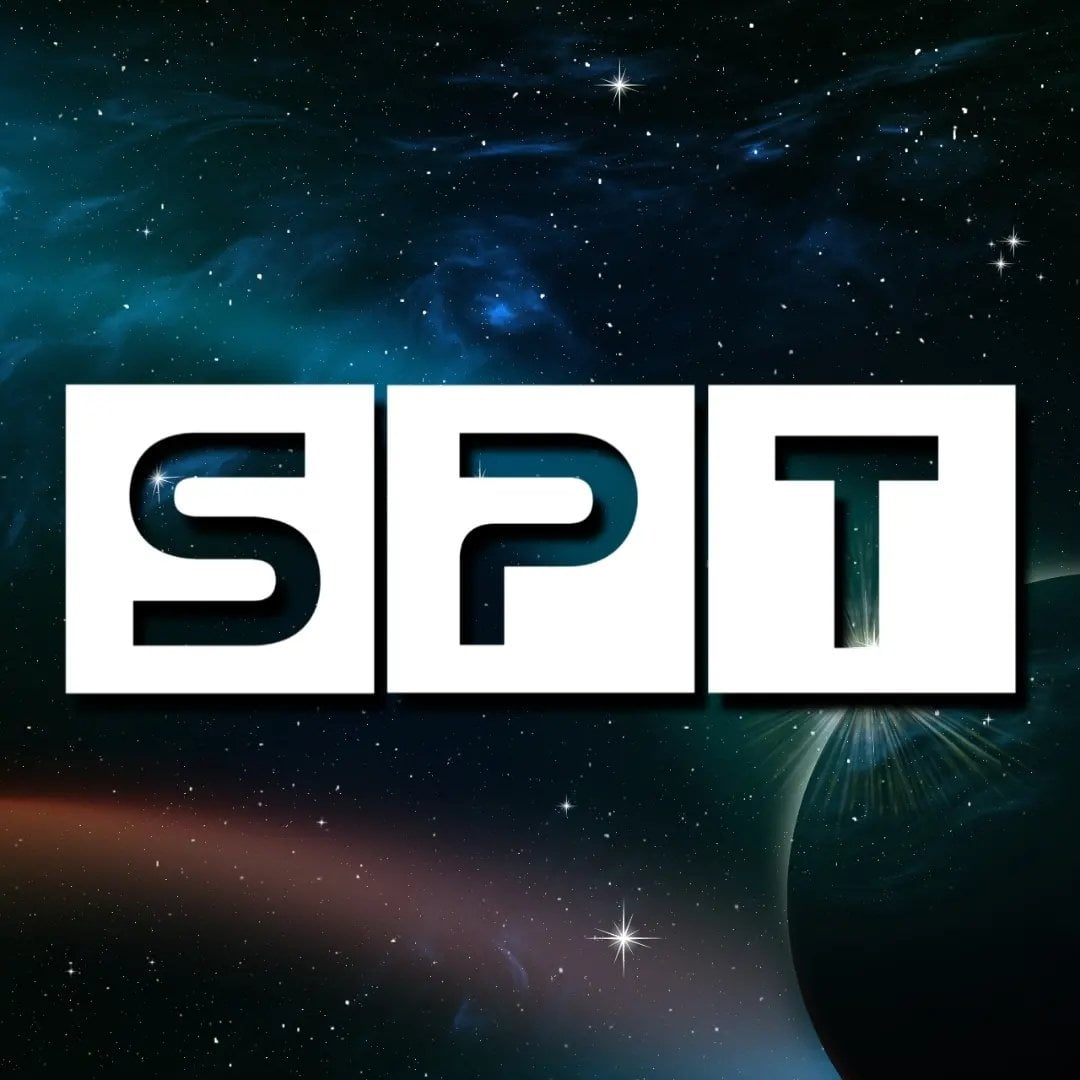The Sun is the most important star in our solar system. It provides us with light, heat, and energy. It also influences our climate, weather, and environment. However, the Sun is also a dynamic and complex object that undergoes various changes and activities. These include sunspots, solar flares, coronal mass ejections, and solar wind. These phenomena can affect the Earth and other planets in various ways, such as disrupting communication, navigation, and power systems, damaging satellites and spacecraft, and exposing astronauts and passengers to radiation. Therefore, it is essential to understand the Sun and its effects on our space environment. This is the main objective of Aditya L1, India’s first mission dedicated to observe the Sun.

What is Aditya L1?
Aditya L1 is a coronagraphy spacecraft for studying the solar atmosphere, designed and developed by the Indian Space Research Organisation (ISRO) and various other Indian research institutes. It is orbiting at about 1.5 million km from Earth in a halo orbit around the Lagrange point 1 (L1) between the Earth and the Sun, where it will study the solar atmosphere, solar magnetic storms, and their impact on the environment around the Earth. It is the first Indian mission dedicated to observe the Sun.

Aditya L1 was launched aboard the PSLV C57 at 11:50 IST on 2 September 2023. It successfully achieved its intended orbit nearly an hour later, and separated from its fourth stage at 12:57 IST. It was inserted at the L1 point on 6 January 2024, at 4:17 pm IST.
Why is Aditya L1 important?
The main objectives of Aditya L1 are:
- To observe the dynamics of the Sun’s chromosphere and corona: To study chromospheric and coronal heating, the physics of partially ionised plasma, of coronal mass ejections (CMEs) and their origins, of the coronal magnetic field and heat transfer mechanisms, and flare exchanges.
- To observe the physical particle environment around its position.
- To determine the sequence of processes in multiple layers below the corona that lead to solar eruptions.
- To study space weather, and the origin, composition and dynamics of solar wind.

Aditya L1 will provide valuable scientific data on the Sun’s corona, which is the outermost layer of the solar atmosphere. The corona is very hot, reaching temperatures of millions of degrees Celsius, and emits high-energy radiation and particles. However, the corona is also very faint, and can only be seen during a total solar eclipse, when the Moon blocks the bright solar disk. Aditya L1 will create an artificial eclipse by using an occulter satellite to block the solar disk, and a coronagraph satellite to observe the corona. This will allow Aditya L1 to study the corona continuously, without being affected by the Earth’s atmosphere or weather.
Aditya L1 will also help us understand the solar wind, which is a stream of charged particles that flows from the Sun and fills the interplanetary space. The solar wind interacts with the Earth’s magnetic field and creates various phenomena, such as the aurora borealis and australis, or the northern and southern lights. The solar wind can also cause geomagnetic storms, which can disrupt the Earth’s electrical grid, communication systems, and satellites. Aditya L1 will measure the properties and variations of the solar wind, and monitor its effects on the Earth’s magnetosphere and ionosphere.
Aditya L1 will also contribute to the global efforts to study the Sun and its influence on the solar system. Aditya L1 will collaborate with other international missions, such as NASA’s Parker Solar Probe and ESA’s Solar Orbiter, which are also exploring the Sun and its environment. Aditya L1 will complement and enhance the data and observations from these missions, and provide a unique perspective from the L1 point. Aditya L1 will also share its data and findings with the scientific community and the public, and inspire future generations of scientists and engineers.

How does Aditya L1 work?
Aditya L1 is a 1,475 kg (3,252 lb) spacecraft with a mission life of five years. It carries seven scientific payloads, with a total mass of 244 kg (538 lb). These payloads are:
- Visible Emission Line Coronagraph (VELC): This is the main payload of Aditya L1, and consists of an occulter satellite and a coronagraph satellite. The occulter satellite blocks the solar disk and creates an artificial eclipse. The coronagraph satellite observes the corona in visible, ultraviolet, and infrared wavelengths. It also measures the magnetic field and velocity of the coronal plasma.
- Solar Ultraviolet Imaging Telescope (SUIT): This payload images the Sun in the ultraviolet range, and studies the chromosphere and the transition region, which are the layers below the corona. It also monitors the solar activity, such as sunspots, flares, and active regions.
- Aditya Solar wind Particle Experiment (ASPEX): This payload measures the properties and variations of the solar wind, such as the density, temperature, speed, and composition of the protons, electrons, and alpha particles. It also detects the presence of heavy ions and anomalous cosmic rays.
- Plasma Analyser Package for Aditya (PAPA): This payload analyses the characteristics and distribution of the electrons and ions in the vicinity of Aditya L1. It also studies the plasma waves and turbulence in the solar wind.
- Solar Low Energy X-ray Spectrometer (SoLEXS): This payload detects the low-energy X-rays emitted by the Sun, and measures their intensity and spectrum. It also studies the heating and acceleration of the solar plasma, and the origin and evolution of solar flares.
- High Energy L1 Orbiting X-ray Spectrometer (HEL1OS): This payload detects the high-energy X-rays emitted by the Sun, and measures their intensity and spectrum. It also studies the energetic processes and phenomena in the solar atmosphere, such as coronal heating, magnetic reconnection, and particle acceleration.
- Magnetometer (MAG): This payload measures the magnetic field around Aditya L1, and monitors its variations and fluctuations. It also studies the interaction of the solar wind and the interplanetary magnetic field with the Earth’s magnetic field.
Aditya L1 is powered by two solar panels, which generate about 700 W of electricity. It also has a lithium-ion battery for backup. It uses a combination of reaction wheels, thrusters, and star sensors for attitude and orbit control. It communicates with the ground station using S-band and X-band transponders. It has a data storage capacity of 64 GB, and a data transmission rate of 2 Mbps.

ISRO develops advanced flight dynamics software
Indian Space Research Organisation (ISRO) has designed and tested a new software for its Aditya-L1 mission, which is India’s first mission dedicated to observe the Sun.
The software is used to calculate the orbit and attitude of the spacecraft, and to plan and execute manoeuvres. This is a crucial task, as the spacecraft is orbiting at a special point called the Lagrange point 1 (L1), which is about 1.5 million km from Earth, where the gravitational forces of the Earth and the Sun balance each other. The orbit at L1 is unstable, and requires frequent corrections to keep the spacecraft in position.
ISRO requested support from the European Space Agency (ESA) to validate its software, as ESA has experience in operating spacecraft at the Lagrange points, such as the LISA Pathfinder and the Gaia missions. ESA and ISRO teams worked together to compare and improve the results from their software, using simulated and real data from various scenarios. The exercise was successful, and both teams are confident in the capabilities of ISRO’s software.

How is ESA supporting ISRO’s Aditya-L1 solar mission?
ESA is supporting ISRO’s Aditya-L1 solar mission in two ways: by providing deep space communication services and by validating critical flight dynamics software.
ESA’s global network of deep space tracking stations allows the mission to communicate with the spacecraft almost anywhere in the solar system. ESA stations support the mission from launch to routine operations, and enable the transmission of commands and receipt of science data from Aditya-L1.
ESA also assisted ISRO with the validation of important new flight dynamics software, which is used to calculate the orbit and attitude of the spacecraft, and to plan and execute manoeuvres. ESA used its own software and experience to verify and cross-check the results from ISRO’s software.
Conclusion
Aditya L1 is a landmark mission for India and the world. It is the first Indian mission dedicated to observe the Sun, and the first mission to place a spacecraft at the L1 point. It will provide unprecedented insights into the solar atmosphere, solar wind, and space weather. It will also advance our scientific knowledge and technological capabilities, and benefit various sectors and applications. Aditya L1 is a shining example of India’s excellence and leadership in space exploration.





